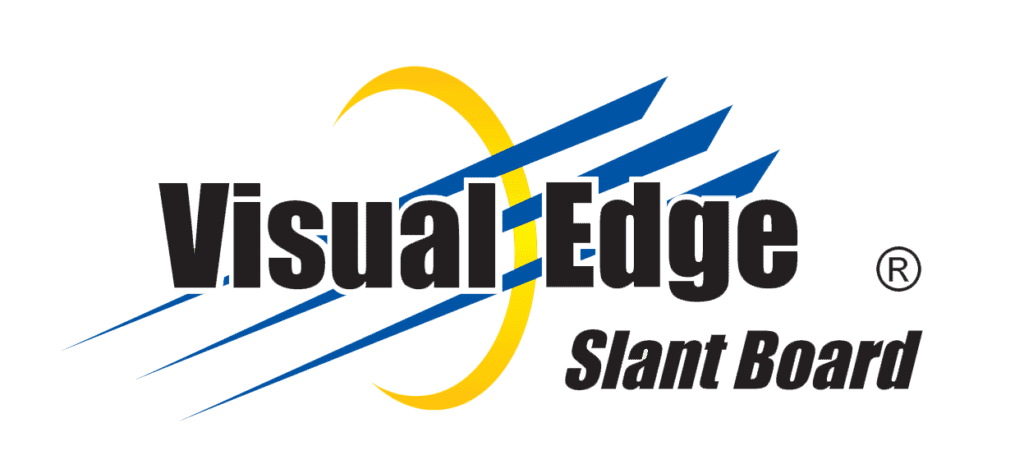Reading, Vision Processing
What is Vision Therapy/Training
Optometric visual training, sometimes called vision therapy or VT, is that part of optometric care devoted to developing, improving and enhancing people’s visual performance.
Over several decades, behavioral optometrists have developed and used visual training in combination with appropriate, judiciously selected lenses to:
- Prevent vision and eye problems from developing
- Develop the visual skills needed to achieve more effectively at school, work or play
- Enhance functioning on tasks demanding sustained visual effort
- Remediate or compensate for vision and eye problems which have already developed
Through visual training, people are able to develop more efficient visual performance.
Vision: A Set of Abilities
Nearly all humans are born with the potential for good eyesight, but vision–the ability to identify, interpret and understand what is seen –is learned and developed, starting from birth.
In learning to walk, a child begins by creeping, crawling, standing, walking with assistance, and finally, walking unaided. A similar process from gross to fine motor control takes place in the development of vision.
One visual skill builds on another, step-by-step as we grow. But many people miss a step, or do not complete a step, or must begin to perform school or other visually demanding tasks before an acceptable foundation of basic visual skills is in place.
Science indicates that we do not “see” with our eyes or our brain; rather, vision is the reception and processing of visual information by the total person. Since two-thirds of all information we receive is visual, it becomes clear that efficient visual skills are a critical part of learning, working and even recreation. Athletes, for example performance in their sport.
Developing visual skills includes learning to use both eyes together effectively. Having both eyes move, align, fixate and focus as a team enhances your ability to interpret and understand the potential visual information that is available to you.
Intelligent persons who are very highly motivated can be good achievers, even with very poor visual skills and abilities, but at untold cost iii wasted energy and unnecessary effort and stress. For those who are less motivated, even one or two deficient visual skills can produce enough stress and frustration to create a non-achiever.
What Are the Visual Skills?
The visual skills, which can be developed and enhanced through visual training, include:
- Tracking. The ability to follow a moving objects smoothly and accurately with both eyes, such as a ball in flight or moving vehicles in traffic.
- Fixation. The ability to quickly and accurately locate and inspect with both eyes a series of stationary objects, one after another, such as moving from word to word while reading.
- Focus Change. The ability to look quickly from hr to near and vice versa without momentary blur, such as looking from the chalkboard to a book or from the dashboard to cars on the street.
- Depth Perception. The ability to judge relative distances of objects and to see and move accurately in three-dimensional space, such as when hitting a ball or parking a car.
- Peripheral Vision. The ability to monitor and interpret what is happening around you while you are attending to a specific central visual task; the ability to use visual information perceived from over a large area.
- Binocularity. The ability to use both eyes together, smoothly equally, simultaneously and accurately.
- Maintaining Attention. The ability to keep doing any particular skill or activity with ease and without interfering with the performance of other skills.
- Near Vision Acuity. The ability to clearly see, inspect, identify and understand objects at near distances, within arm’ length.
- Distance Acuity. The ability to clearly see inspects, identify and understand objects at a distance. People with 20/20 distance sight still may have visual problems.
- Visualization. The ability to form mental images in your “mind’s eye,” retain or store them for future recall, or for synthesis into new mental images beyond your current or past direct experiences.
Visual Skills/Visual Stress
If a person’s visual skills are not adequately developed, or a person fails to coordinate vision with other senses, vision problems may occur. With poor binocularity, for example, one eye may locate an object in one place while the other eye locates it in another. The confusing signals may result in:
- Headaches. Especially near the eyes or forehead, or occasionally at the back of the head.
- Double Vision. Two objects are seen when only one exists.
- Reduced Performance. Losing your place while reading, rereading words or lines, difficulty with Understanding or recalling what you’ve read, reading slowly.
- Discomfort, Fatigue. Body tension, stress or pain; weariness at the end of a school or workday.
- Suppression. Information from one eye may be blocked or ignored to avoid seeing double. If the visual problem is not corrected, it may get worse.
Near point visual stress, the result of sustained visual activities done at less than arm’s length, may produce most of the problems listed above.
There are many other common eye and visual problems, which can limit the way you live and enjoy life. These include:
- Nearsightedness. Myopia-seeing more easily at near than at distances.
- Farsightedness. Hyperopia a-seeing more easily at distances than at near.
- Strabismus. Crossed eyes.
- Amblyopia. Lowered visual acuity (clarity), not correctable to normal acuity with lenses.
- Astigmatism. Distorted vision-interferes with seeing clearly at any distance without effort.
- Poor Vision-Body Movement Coordination. Clumsiness, awkwardness, inefficient eye-hand or eye- body coordination, poor handwriting.
Visual training, usually combined with appropriate lenses, may remedy, improve or prevent any of these conditions in both children and adults. Visual training and lenses are intended to alleviate the symptoms and eliminate the underlying cause inadequate visual skills and visual stress.
Studies show that success in visual training depends on an appropriate program prescribed by your optometrist, and on an individual patient’s cooperation, participation and motivation.
Beyond Visual Performance
Visual training also has proven to be a remarkably effective tool in helping’ people with learning-related visual problems. Many problems in learning to read and write are made worse by poorly developed visual skills.
Dozens of experimental programs involving thousands of children and adults demonstrate that when visual skills are enhanced through visual training, learning is easier, reading levels rise, and in some cases, IQ scores have increased.
Building visual skills also increases the ability to visualize, conceptualize and to create. Dr. Johan Pestalozzi, a Swiss educated reformer, notes that “conceptual thinking is built on visual understanding “ visual understandings the basis of all knowledge.”
What is a Behavioral Optometrist?
Behavioral optometrists spend years in post-graduate, continuing education to master the complex visual programs prescribed to prevent or eliminate visual problems and enhance visual performance.
Not all optometrists practice behavioral optometry, which includes developmental and functional optometry. If you do not now have an optometrist who practices behavioral optometry, call or write the OEP Foundation. Or, make sure you receive a yes answer to each of the following questions before you make an appointment:
- Do you make a full series of near point vision tests?
- Do you make work- or school-related visual perception tests?
- Do you provide full vision care and visual training in your office, or will you refer me to a colleague if needed?
- Will you see me again during the year, and periodically to determine my progress?
WHAT IS OPTOMETRIC VISION THERAPY?
Optometric vision therapy is an individualized treatment program designed to improve visual function and performance. It is an approved treatment modality for disorders including, but not limited to:
- Ocular motility dysfunction/eye movement disorders
- Vergence dysfunction/inefficiency in using both eyes together
- Strabismus/misalignment of the eyes
- Amblyopia/lazy eye
- Accommodative disorders/focusing problems
- Visual information processing disorders
- Visual sensory and motor integration
- Visual rehabilitation after traumatic brain injury or stroke all of which result in inefficient visual information processing.
Most people who visit an optometrist know that any eye health problems will be detected and managed and that glasses or contact lenses will be prescribed if indicated. That picture is incomplete because there are visual conditions that are best managed by optometric vision therapy. This therapy enables an individual to learn more efficient ways to perform visually. It is an art and science of vision care that complements the prescription of eyeglasses, contact lenses and the treatment of eye disease.
Optometric vision therapy, also referred to as visual training or orthoptics (CPT 92065), is an established, medically necessary therapy when prescribed by an optometrist. Optometric vision therapy can improve visual function much like physical therapy can improve general motor function. An optometrist to determine the presence of visual deficiencies administers clinical tests with associated normative values. If optometric vision therapy is indicated, the optometrist recommends a specific treatment plan.
Optometric vision therapy typically invokes a programmed combination of office treatment and home therapy. Lenses, prisms, optical devices, and specially adapted computers are some of the devices through which one learns to use vision more effectively. The specific materials are less important than the feedback provided to the patient to enable change. Visual skills need to be developed until they become automatic and are subconsciously integrated with the other skills. The extent of success is also linked to patient compliance.
The benefits of optometric vision therapy, which include improved visual information processing and the ability to sustain visual function over time, are as applicable to the child in the classroom as they are to the adult using a computer or reading a book. Without efficient visual skills the act of reading can be frustrating. Some of the common symptoms relieved through vision therapy include eyestrain, visually induced headaches, inability to concentrate when doing visual tasks, and errors such as loss of place or reversals. More often, individuals have no recognized symptoms due to their avoidance of visually demanding tasks or an adaptation that decreases their performance. Optometric vision therapy also facilitates appropriate visual development, and serves as a component of the multi-disciplinary effort following stroke or head injury.
Members of the College of Optometrists in Vision Development (COVD) have post-graduate education in the diagnosis and management of conditions for which optometric vision therapy is an appropriate treatment. Fellows of the College are certified in providing this vision care. For further information, contact COVD or consult with your COVD optometrist.
Dedicated to the Enhancement of Vision
Permission to reprint the contents of this C.O.V.D. White Paper granted to VISUAL EDGE, INC. ® – 05/01/09 by:
College of Optometrists in Vision Development (COVD)
215 West Garfield Road, Suite 200
Aurora, OH 44202
(330) 995-0718, (888) 995-0719, FAX (330) 995-0719
Optometric Extension Program Foundation, Inc.
1921 E. Carnegie Ave., Ste. 3-L
Santa Ana, CA 92705-5510
(949) 250-8070
Pamphlet Copyright © 1995, OEP Foundation, Inc. – A nonprofit foundation for education and research in Vision
Permission to reprint the contents of this brochure granted to VISUAL EDGE, INC. ® – 05/01/09 by: the Optometric Extension Program Foundation, Inc.

